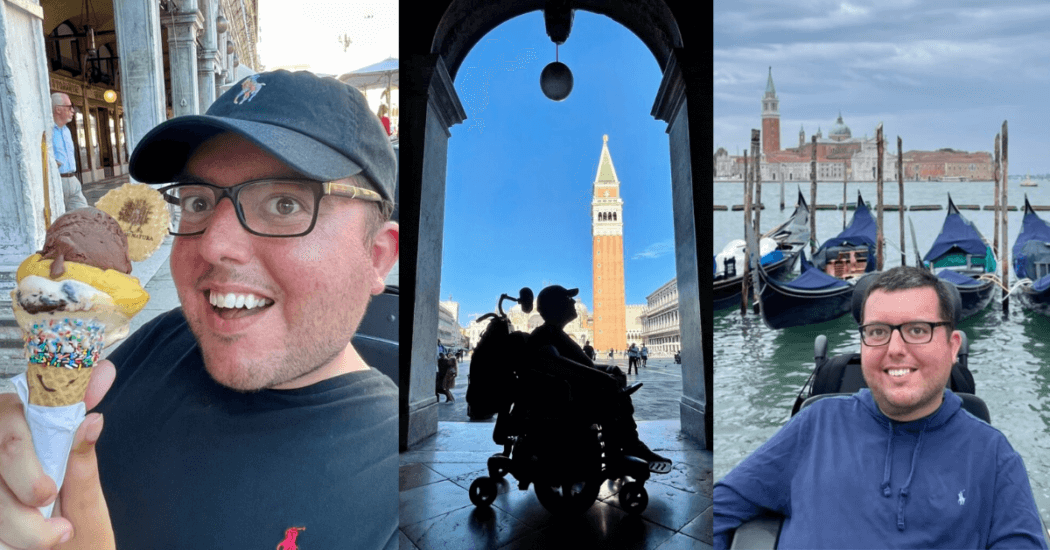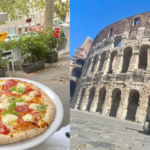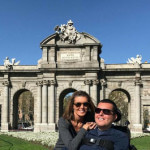Italy was a destination that I wanted to visit for as long as I could remember and in particular, I always wanted to visit the city of Venice. With singing gondoliers and iconic sights, this was one of my top dream destinations, but I worried that Venice wouldn’t be wheelchair-friendly. I mean, with waterways for streets, how could it possibly be accessible?
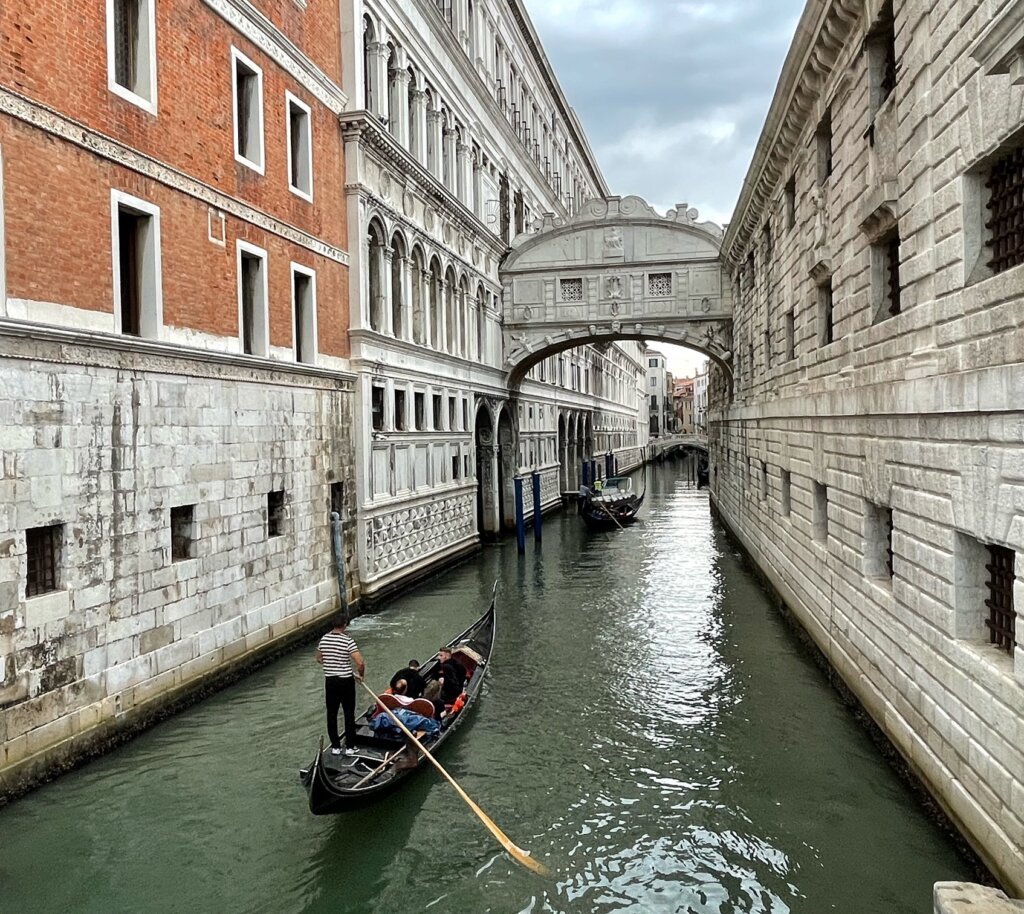
In September 2021, I decided to finally book a trip to Venice and try it out. As the saying goes, “If you never go, you’ll never know.” So, my mom, our friends Bill and Melanie, and I planned a few days in Venice after staying in Rome for five days. While Rome was absolutely incredible, Venice surprised me in so many ways and I certainly fell in love with the city.
If you have ever thought about visiting Venice as a wheelchair user, but aren’t sure if that’s even possible, hopefully this travel guide will help you plan your trip. From navigating transportation options to booking accessible hotels and checking out the best wheelchair accessible Venice Italy attractions, here’s everything to know before you travel to Venice –
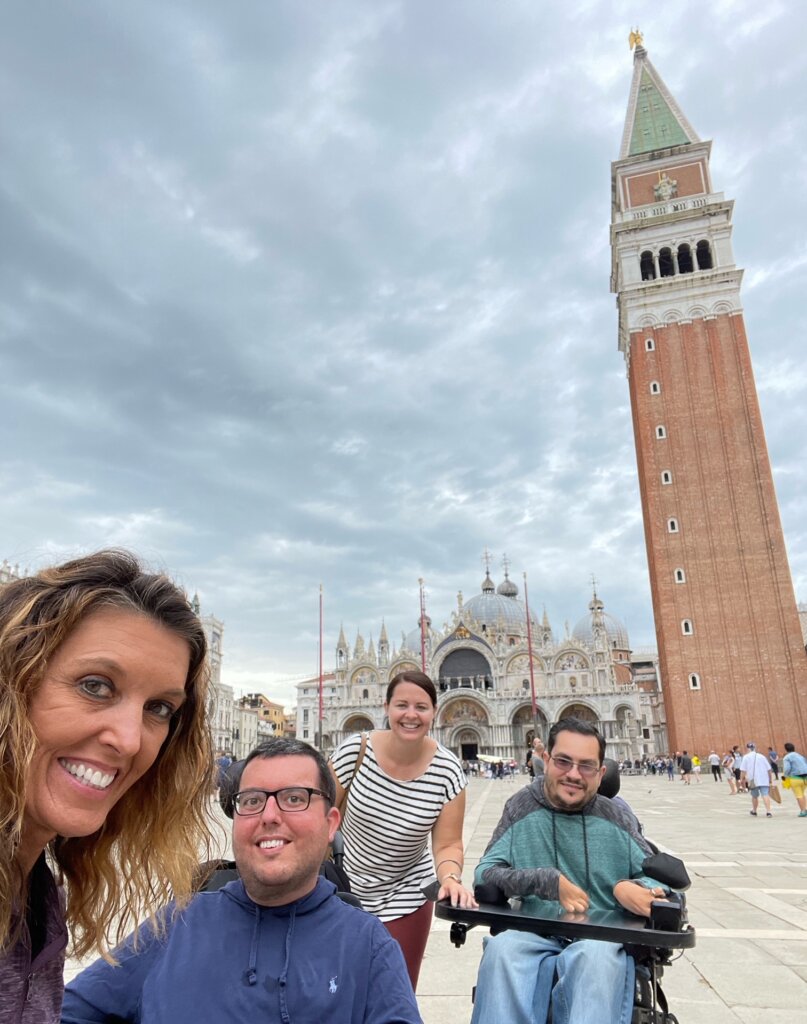
Getting to Venice (and Transportation Options)
Our journey to Venice began at the main train station in Rome. From Rome to Venice, it’s about 330 miles, but there are high-speed trains that you can take with Trenitalia. We booked train tickets online a couple months before arriving in Italy and thanks to assistance from the kind folks at Rome and Italy (the accessible tour company we used in Rome), wheelchair accessible seating and accommodations were arranged for the train journey.

If you need accessibility with trains in Italy, you can contact Sala Blu. A representative from Sala Blu can meet you at the train station, make sure all of the equipment is available to get you onboard the train as a wheelchair user, and they’ll even assist with your luggage if you need that. You can learn more about Sala Blu’s accessibility services here.
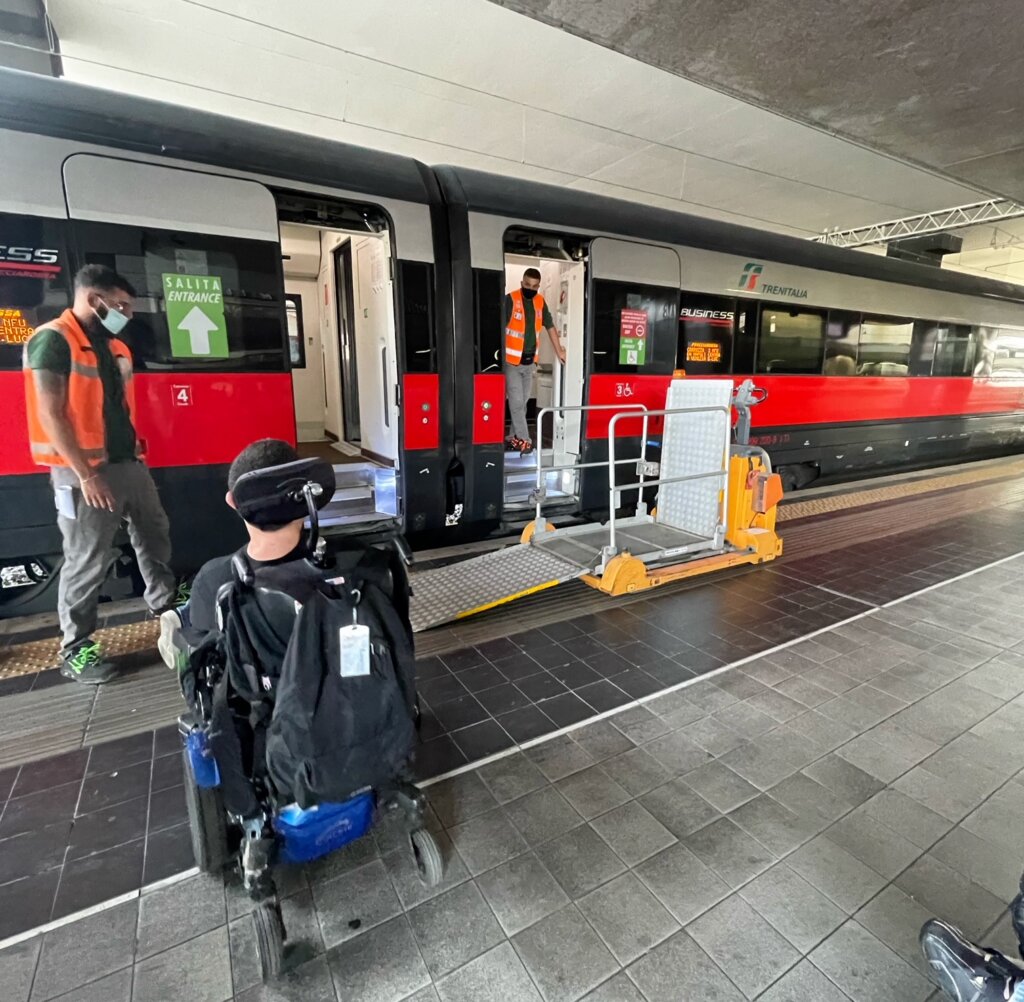
A lift was available to get me on the train with my powered wheelchair and once onboard, I was highly impressed with the accessibility. There was an accessible restroom available and we had a spacious area to relax during the ride to Venice, which took nearly four hours from Rome.
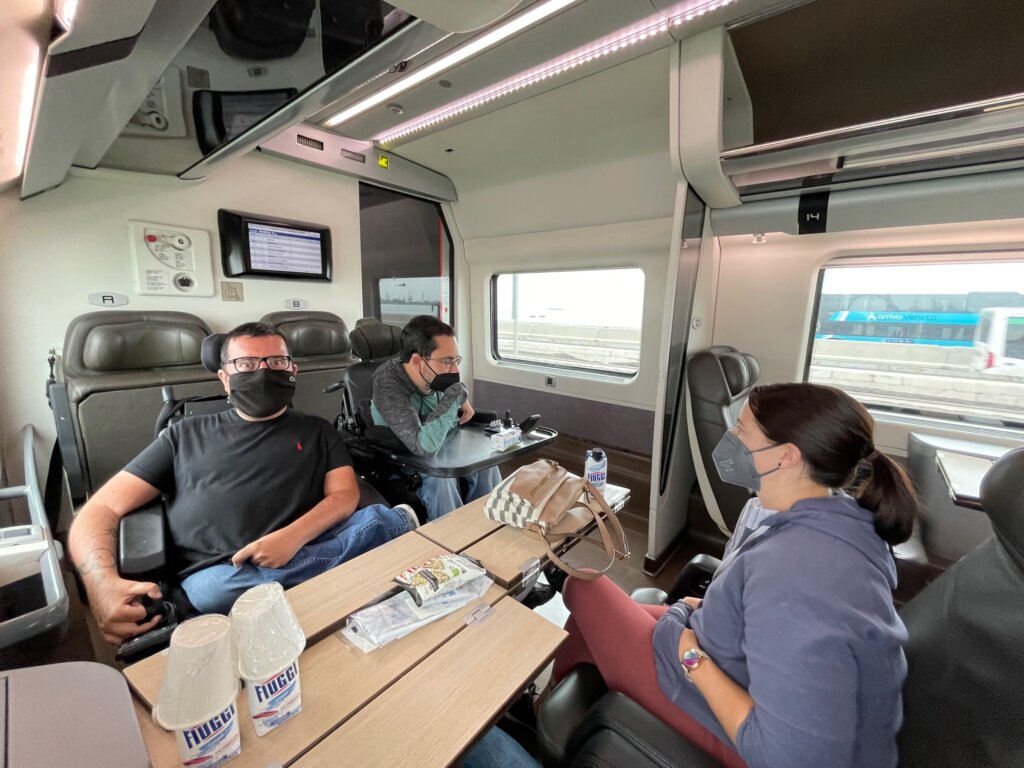

Once we arrived in Venice, we were met by a representative from Rome and Italy immediately after getting off the train. They arranged accessible water taxis to take us from the train station to our hotel. The water taxis had a lift to get me down into the boat and it was an easy, 15-minute ride to the hotel. The private water taxis in Venice are quite expensive, but I was happy to see that an accessible option was available. Rome and Italy arranged our accessible water taxis, but if you’d like to book one yourself, check out Sanitrans.
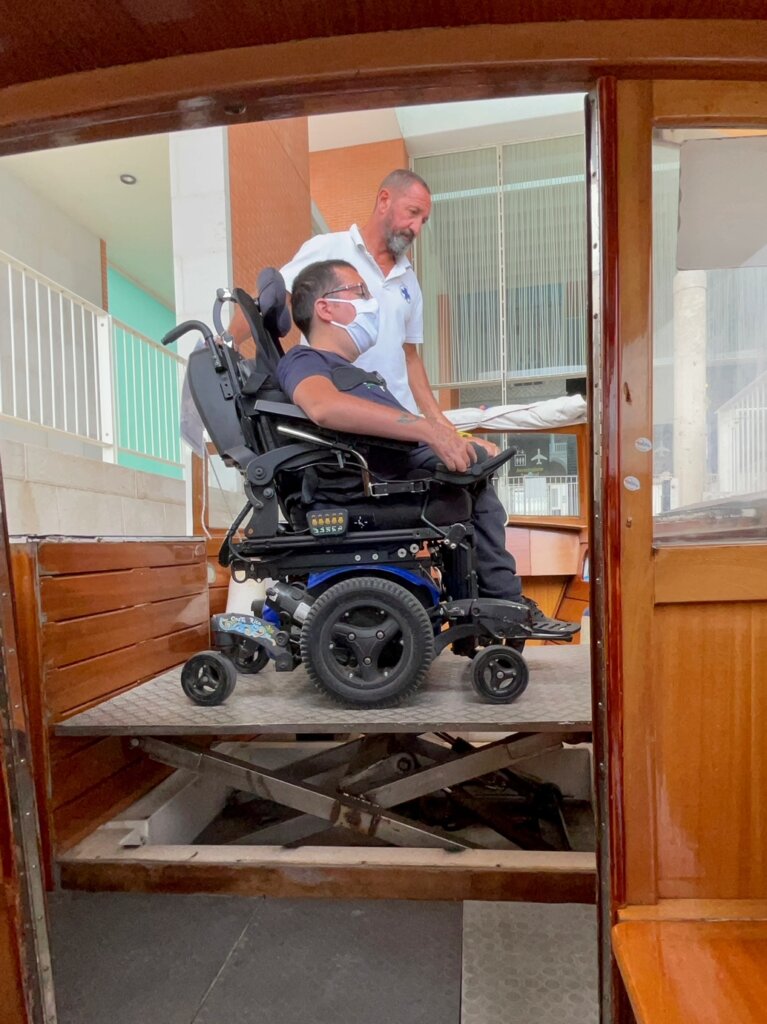
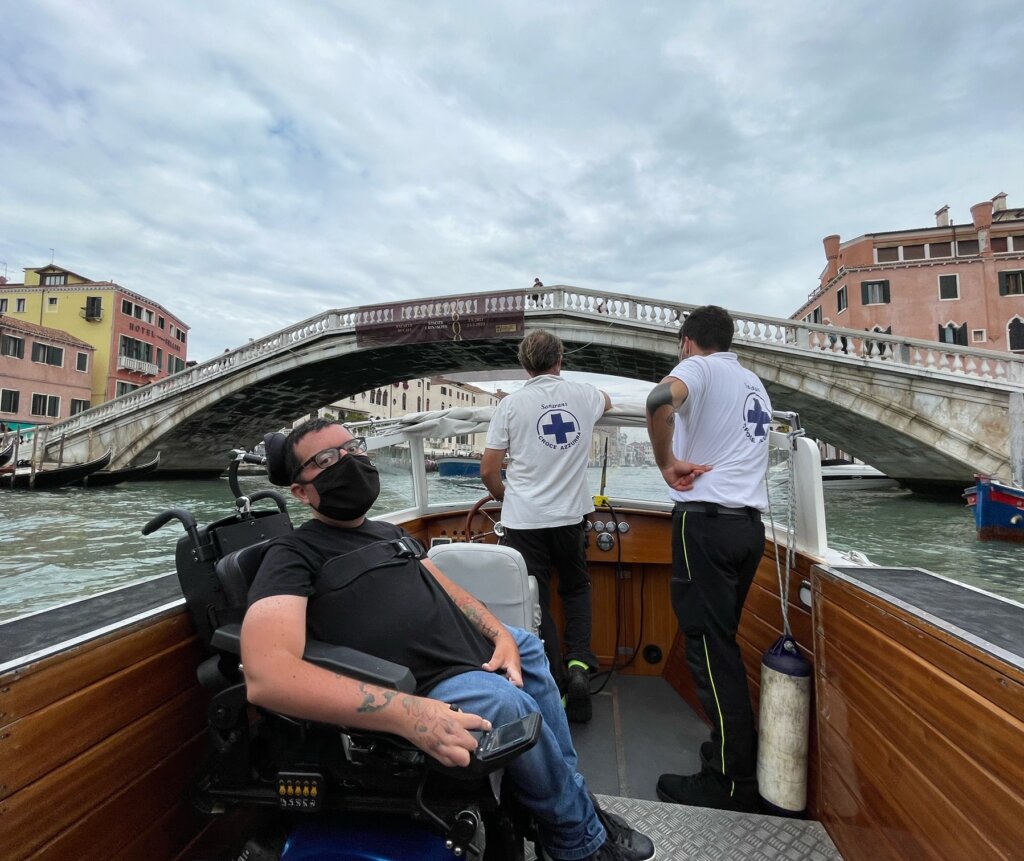
A cheaper option than the water taxis could be the water buses in Venice, which start from just a couple euros per person. Water buses are also known as Vaporettos and they are Venice’s version of public transportation. I had a chance to try out the water buses while in Venice and they were very accessible. I easily rolled onboard with my powered wheelchair.

Before visiting Venice, I worried a lot about transportation. However, I was pleasantly surprised by how easy it was to get around Venice as a wheelchair user, thanks to accessible water taxis and buses.
My Time in Wheelchair Accessible Venice Italy
The city of Venice is split into six districts (or “sestieri” as Venetians call them) and the district of San Marco is considered the tourist hub. San Marco is home to the city’s biggest attractions, including the Doge’s Palace and St. Mark’s Square. We decided to stay at a hotel in San Marco for our stay, which I’ll tell you all about in just a bit, and I’m so glad we did! By staying in San Marco, we were able to walk/roll to nearly all of the attractions we wanted to visit, plus a plethora of restaurants and shops.
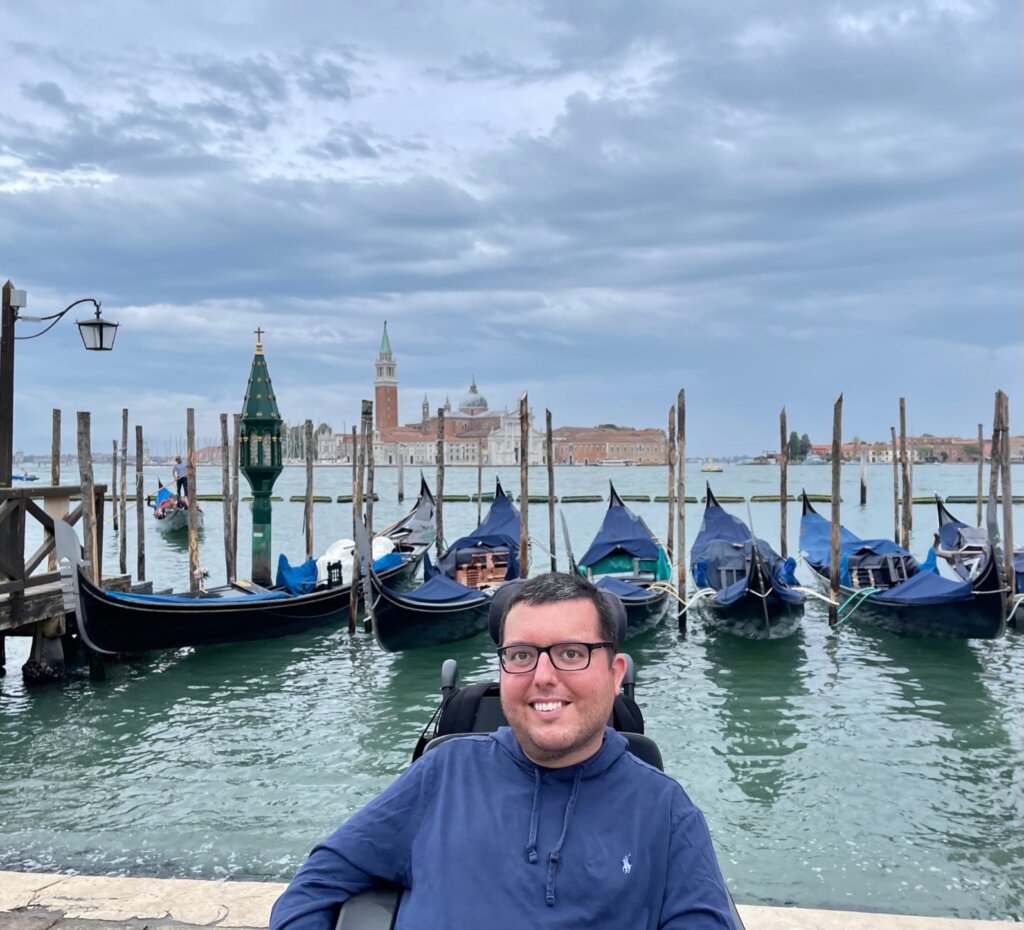

As you may already know, Venice has zero cars. You must either walk/roll everywhere or use the water taxis and water buses. Bridges connect the islands of Venice and I was so happy to discover that quite a few bridges had long ramps for easy access. We started from St. Mark’s Square, the main tourist hub of Venice, and rolled along the waterfront to a few different islands before eventually coming to a bridge with no ramp, only stairs. But I expected so little accessibility in Venice that these ramps were a pleasant surprise and they gave me a chance to venture out a bit from central San Marco.


The cobblestone in and around San Marco (including in the back alleys) was very smooth to roll on with my powered wheelchair. I had no issues at all and honestly, I thought it was smoother terrain to roll on than a lot of places in the U.S. Also, in terms of accessibility, many shops had a step to enter, but there were also a lot that were accessible.
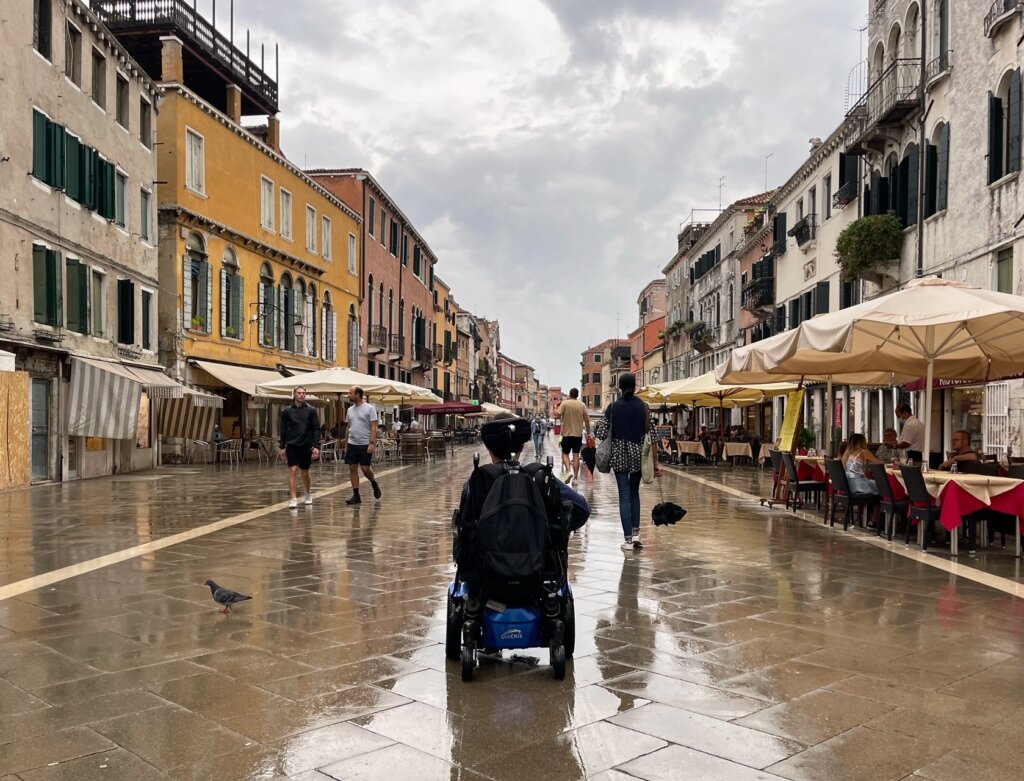
Venice, and Italy in general, has amazing food, and I absolutely loved everything that I ate in Venice. Pretty much all restaurants had outdoor seating, so even if there was a step to get inside, we could still enjoy a nice meal outdoors. Without a doubt, my favorite restaurant in Venice was Rossopomodoro. I had the best pizza of my life there and the restaurant was wheelchair accessible for us to go inside.

Another restaurant that we enjoyed was Ristorante Pedavena. It was wheelchair accessible and while not as life-changing as Rossopomodoro, the food was tasty. I had fried calamari to start and lasagna for my entree. Of course, we had to finish the night with cannolis from a nearby shop. Yum!
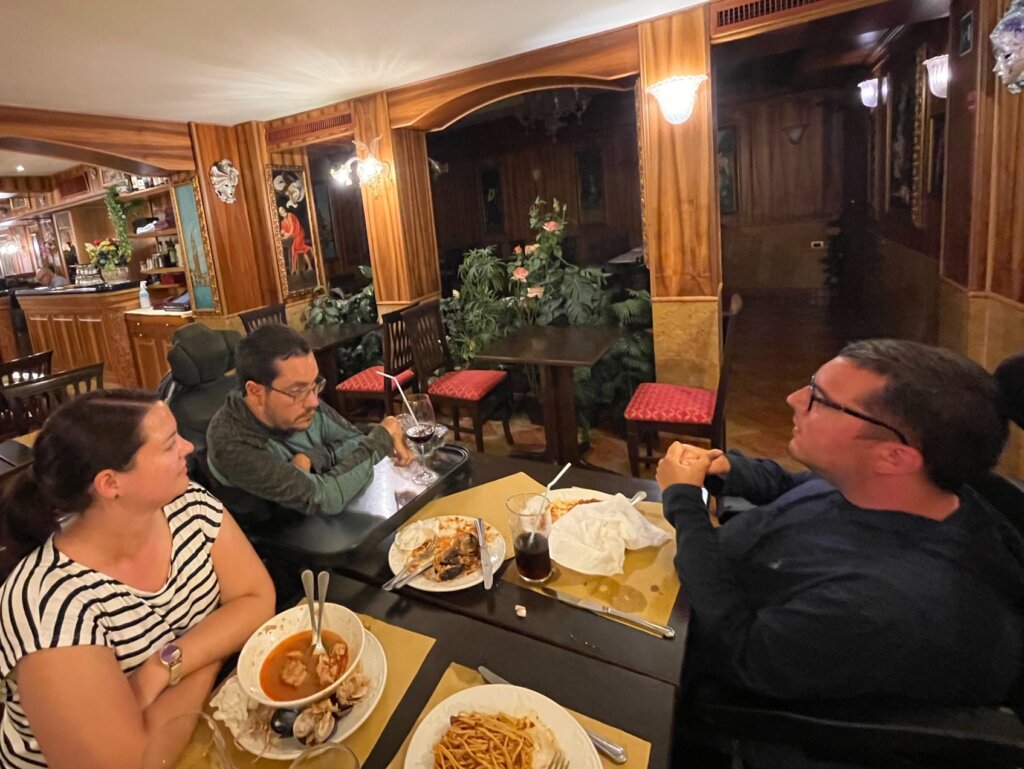

In addition to eating and shopping our way through San Marco, we did visit a couple attractions, including St. Mark’s Basilica and the Doge’s Palace. Both attractions, and other points of interest in Venice, are free for wheelchair users and one companion. They also let us skip the lines to enter, which was nice because the city was packed in September when we visited!
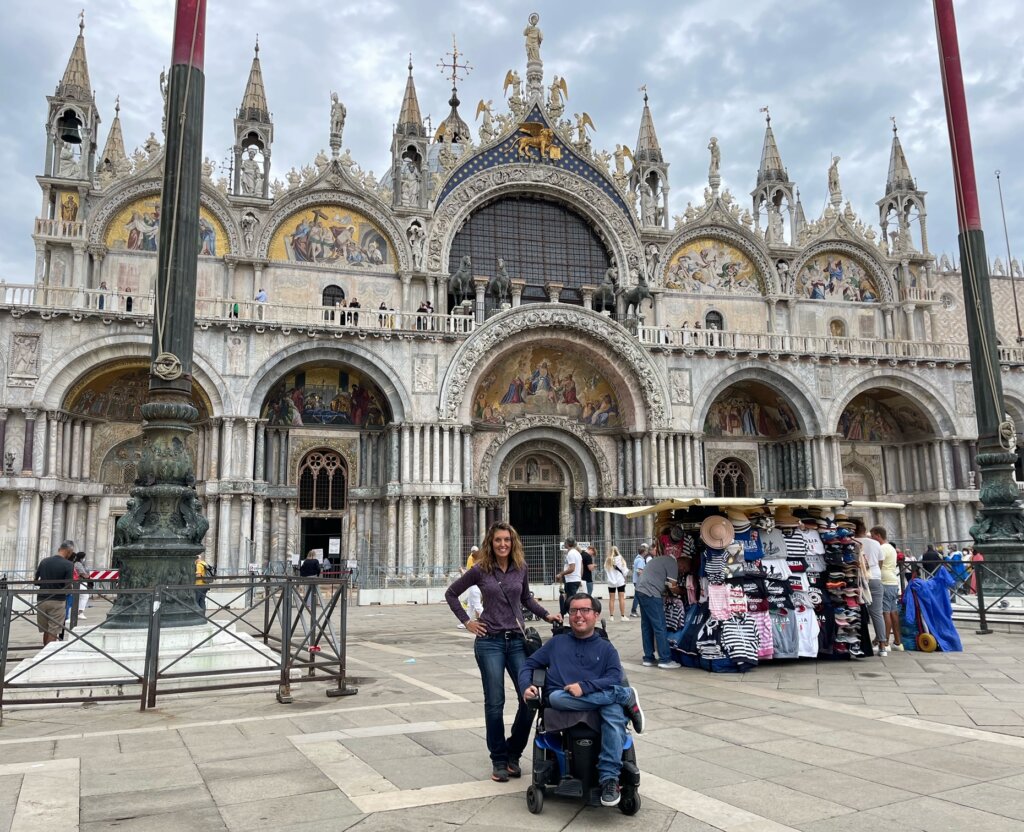
St. Mark’s Basilica is located in St. Mark’s Square, the most popular area of Venice, and the exterior is quite impressive. But it’s worth heading inside to enjoy its beauty as well!
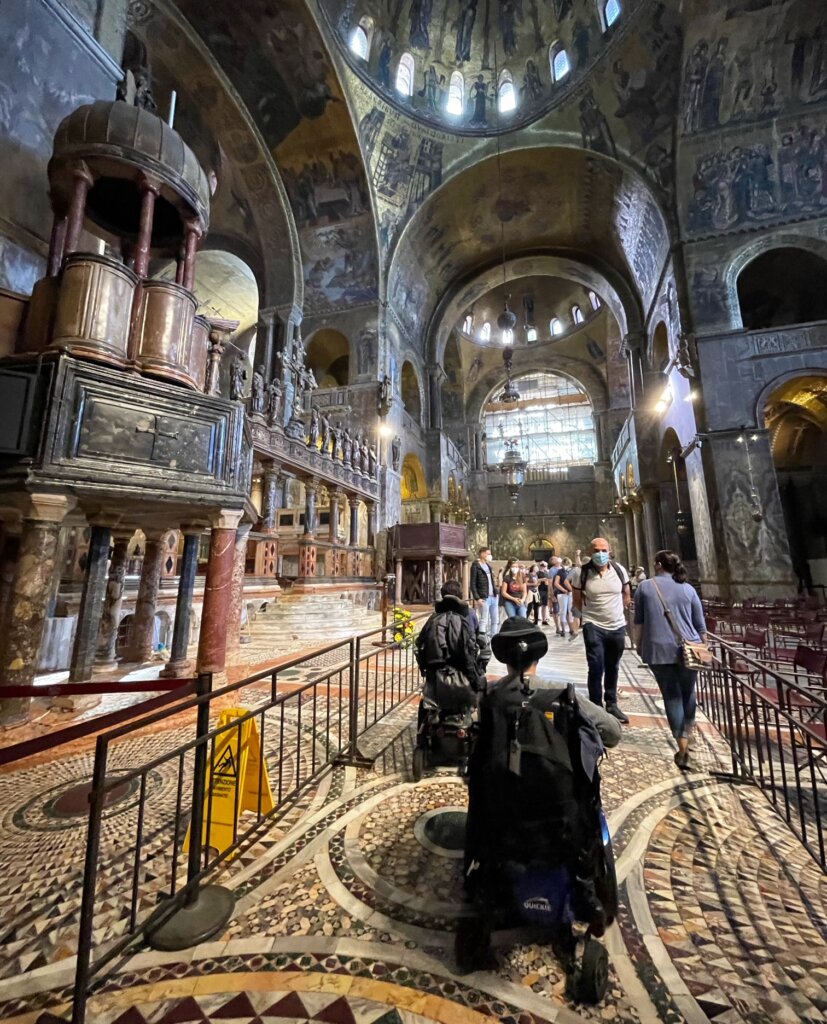
There is a wheelchair accessible entrance for St. Mark’s Basilica on the side. Once inside, it was easy for me to maneuver throughout the Basilica. Construction began on the Basilica in the ninth century and today, it is a sight to behold with golden mosaics inside. St. Mark’s Basilica is also known as the “golden church”, and it is certainly worth visiting. Plan to spend 20-40 minutes inside if you’re visiting on your own instead of on a guided tour.
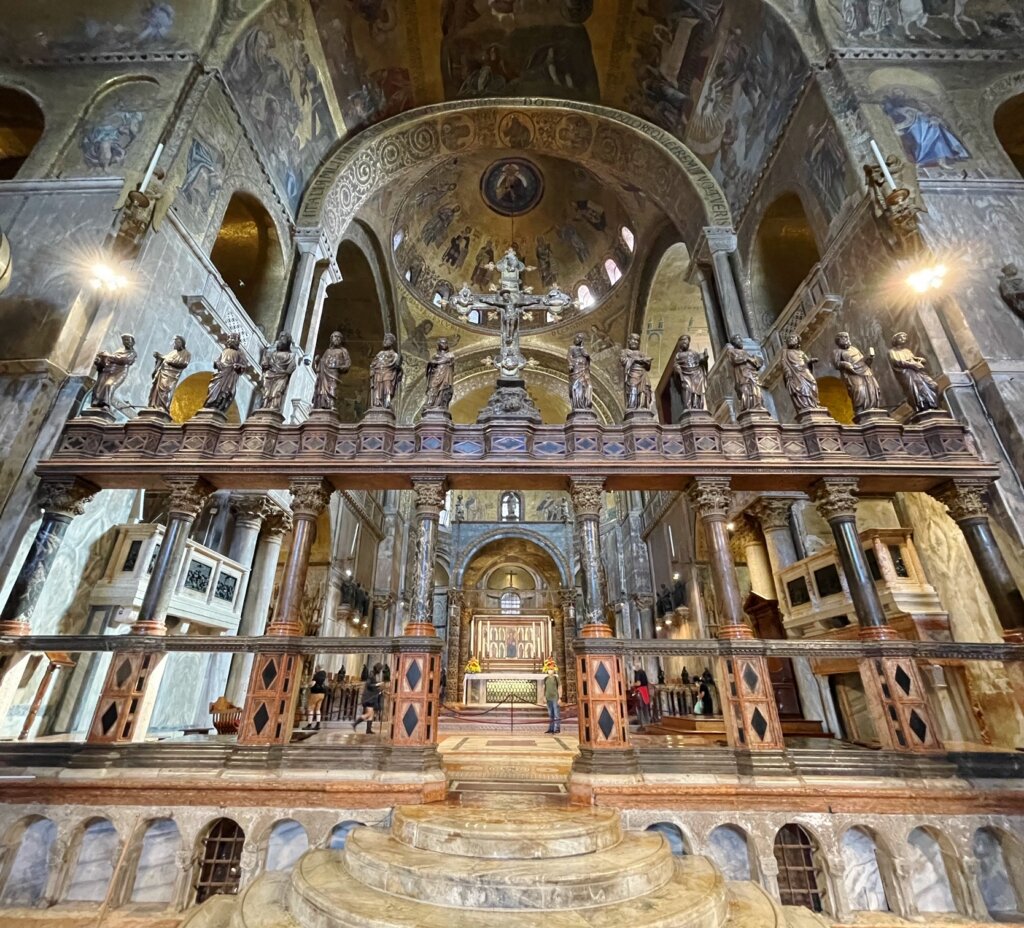
Right by St. Mark’s Basilica is the Doge’s Palace, which is a must-visit while in Venice. As I mentioned earlier, wheelchair users and a companion can get in for free and there is an accessible entrance. Once inside, elevators are available to access the different levels of the Doge’s Palace.
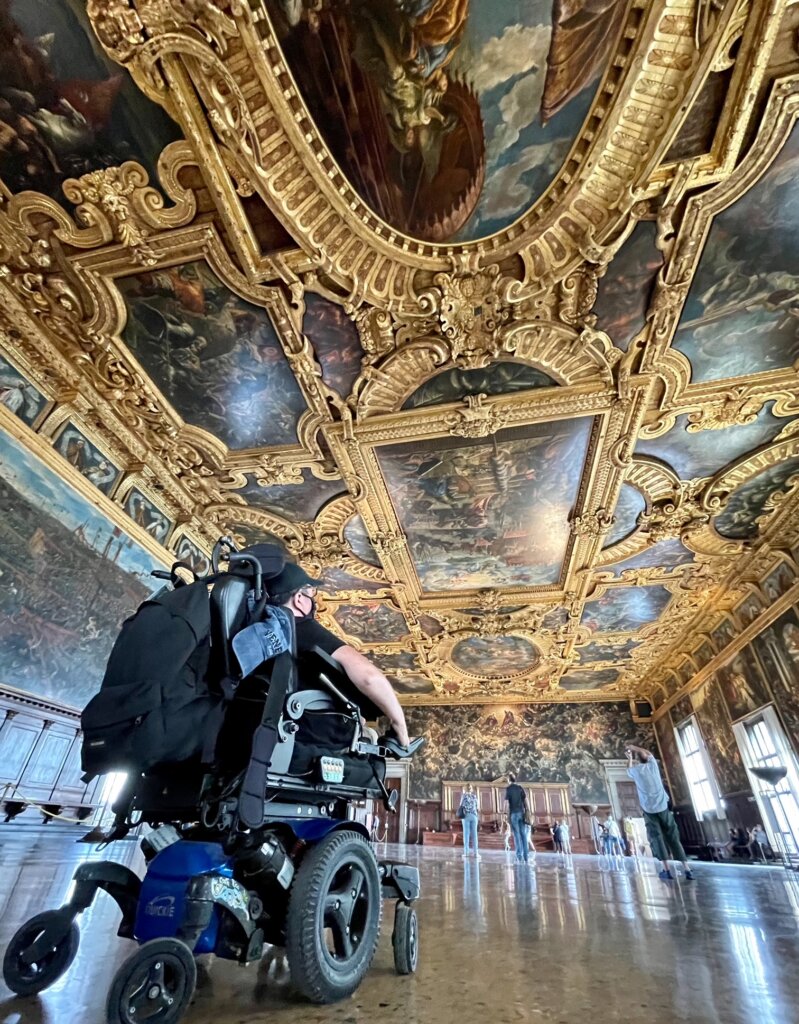
If you’re wondering what exactly the Doge’s Palace is, it’s the former seat of Venetian government and it was built in the 14th century. It serves as a masterpiece of Gothic architecture today and is stunning on the outside, but especially inside. Whether you’re looking to learn more about Venetian history or just want to admire the architecture, you should definitely plan to spend a couple hours exploring the Doge’s Palace.
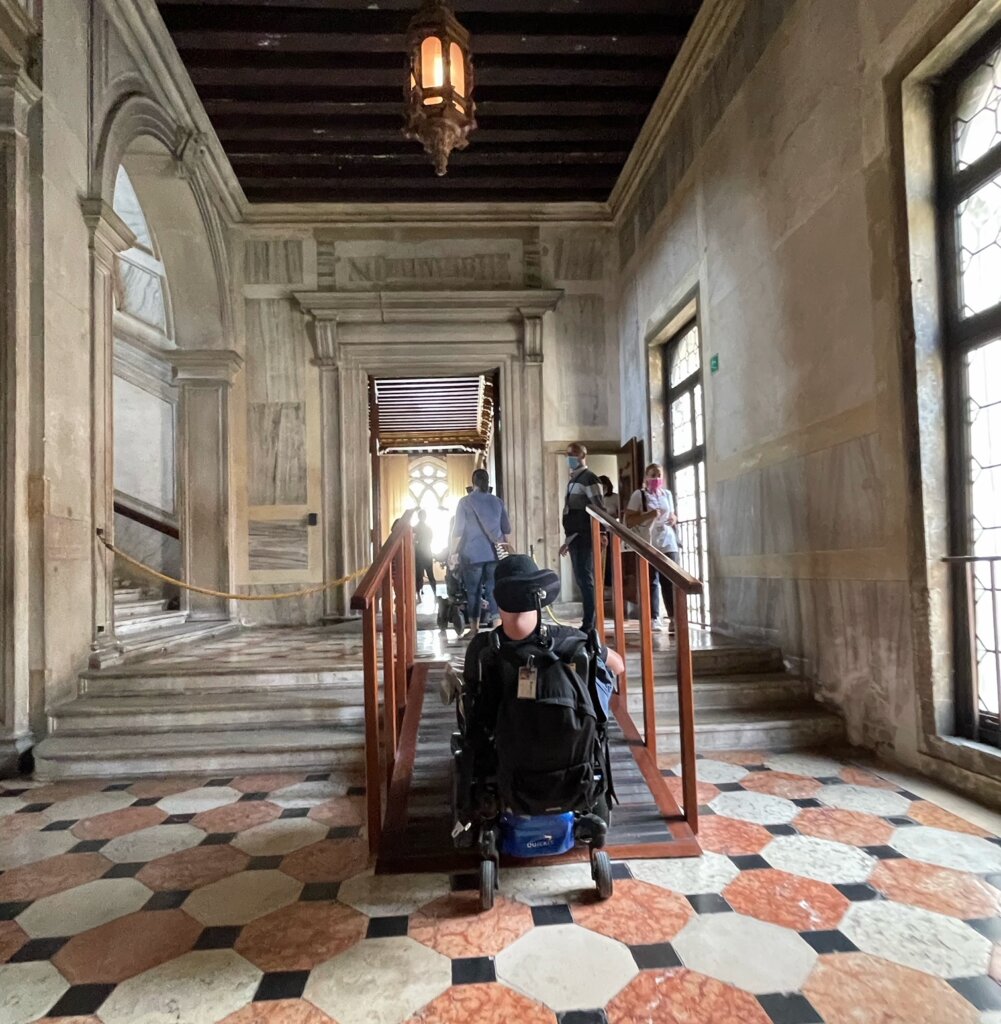

After spending two days exploring Venice on our own, my mom and I decided to do a day trip to the Venetian islands of Burano, Mazzorbo, and Murano. These islands are just a 45-60 minute ride on the water bus from central Venice (San Marco area), but offer so much to see & do!

Burano 
Burano 
Burano 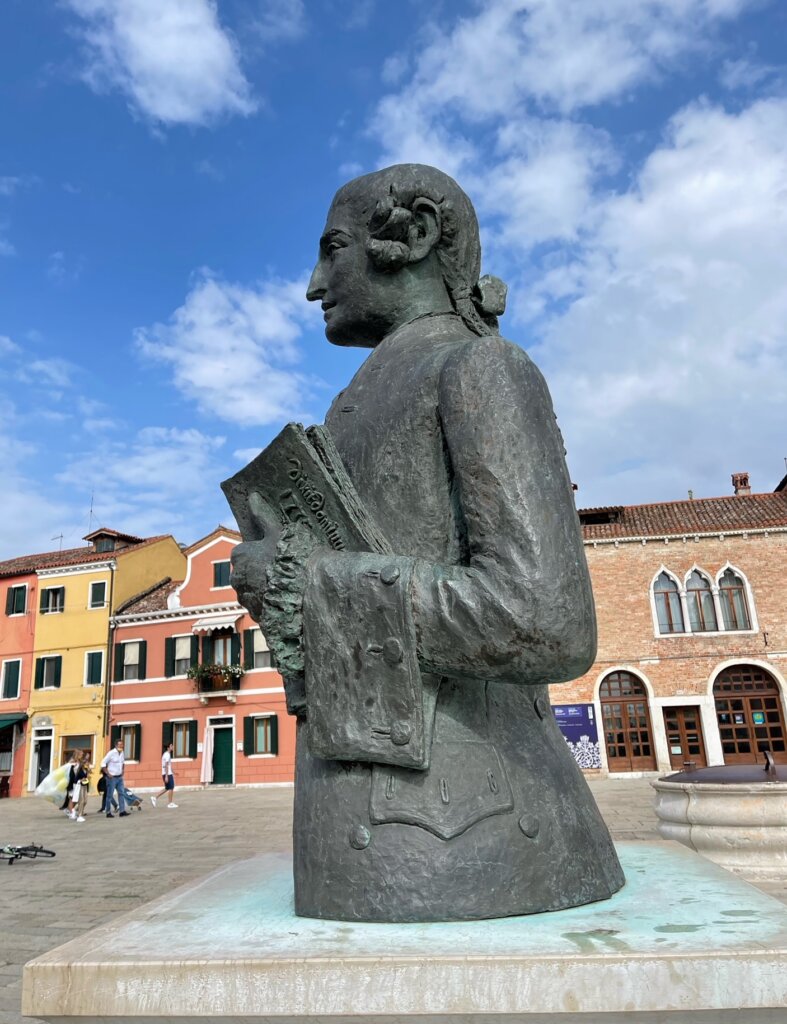
Burano 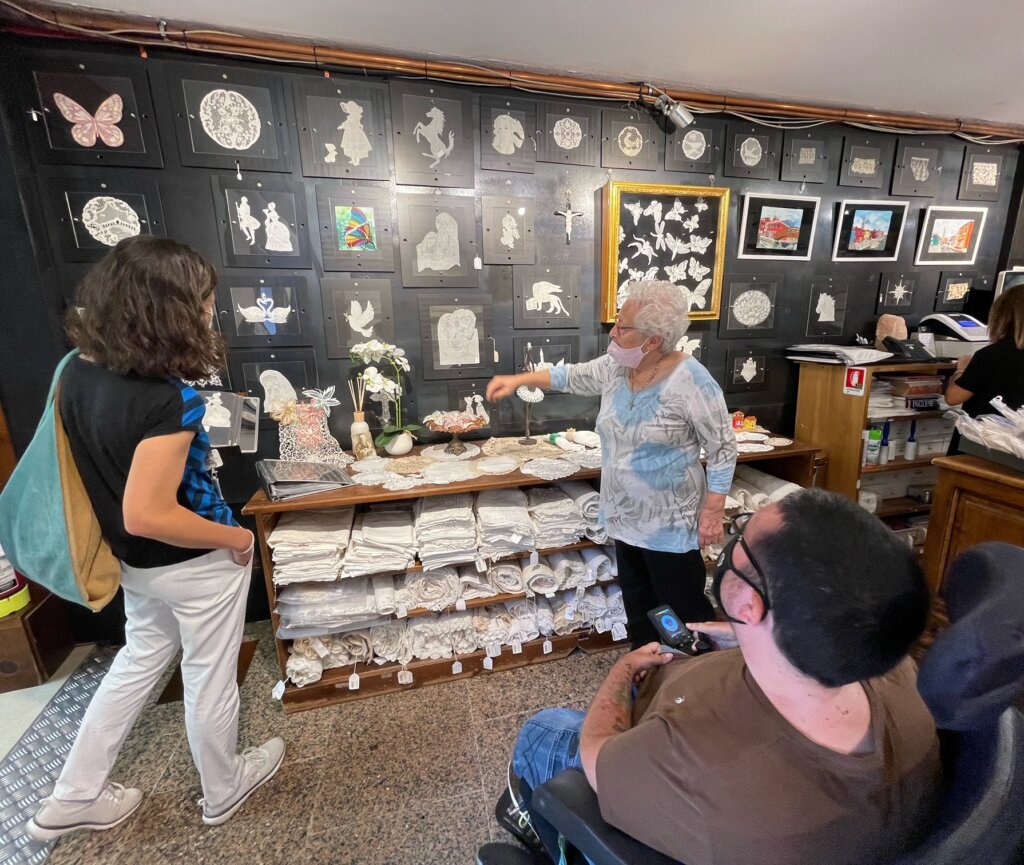
Burano 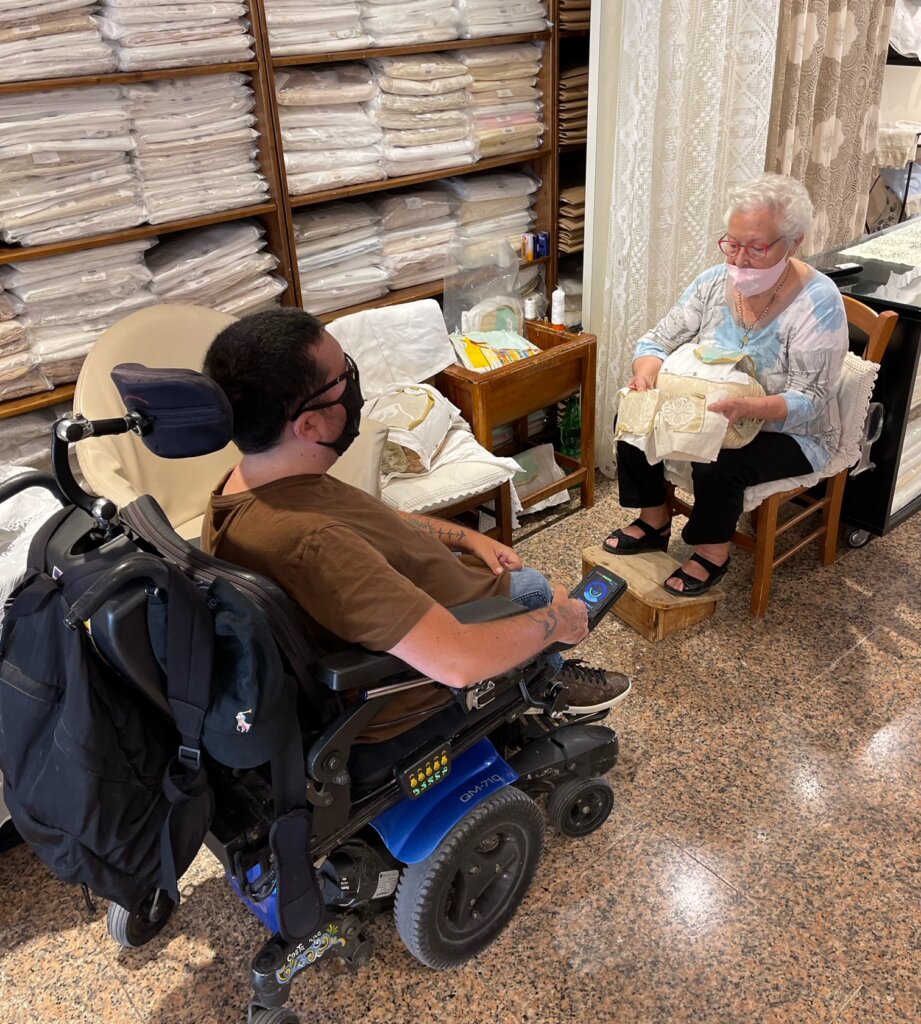
Burano 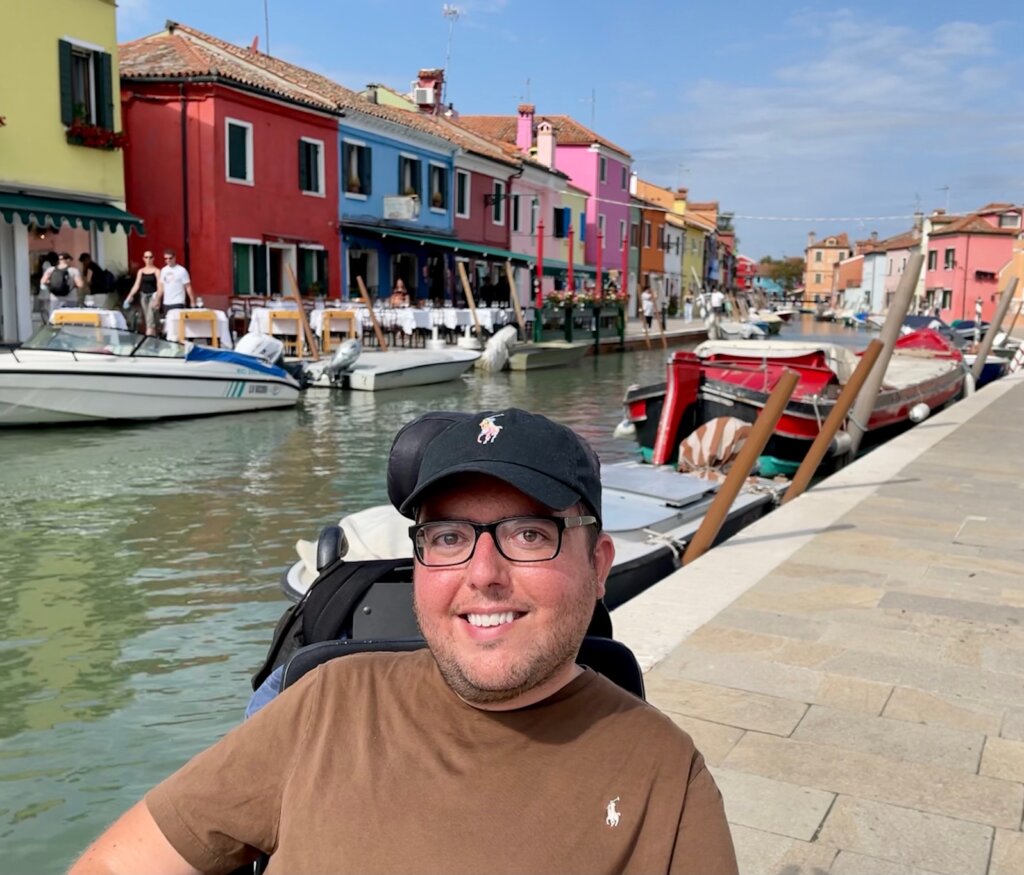
Burano
We chose to do this day tour with Disabled Accessible Travel, a tour company that specializes in wheelchair accessibility, and everything went very smoothly thanks to them! Our guide, Erika, met us at our hotel in the morning, walked to the water bus with us, and guided us around for the day, explaining all of the phenomenal sights that we saw.
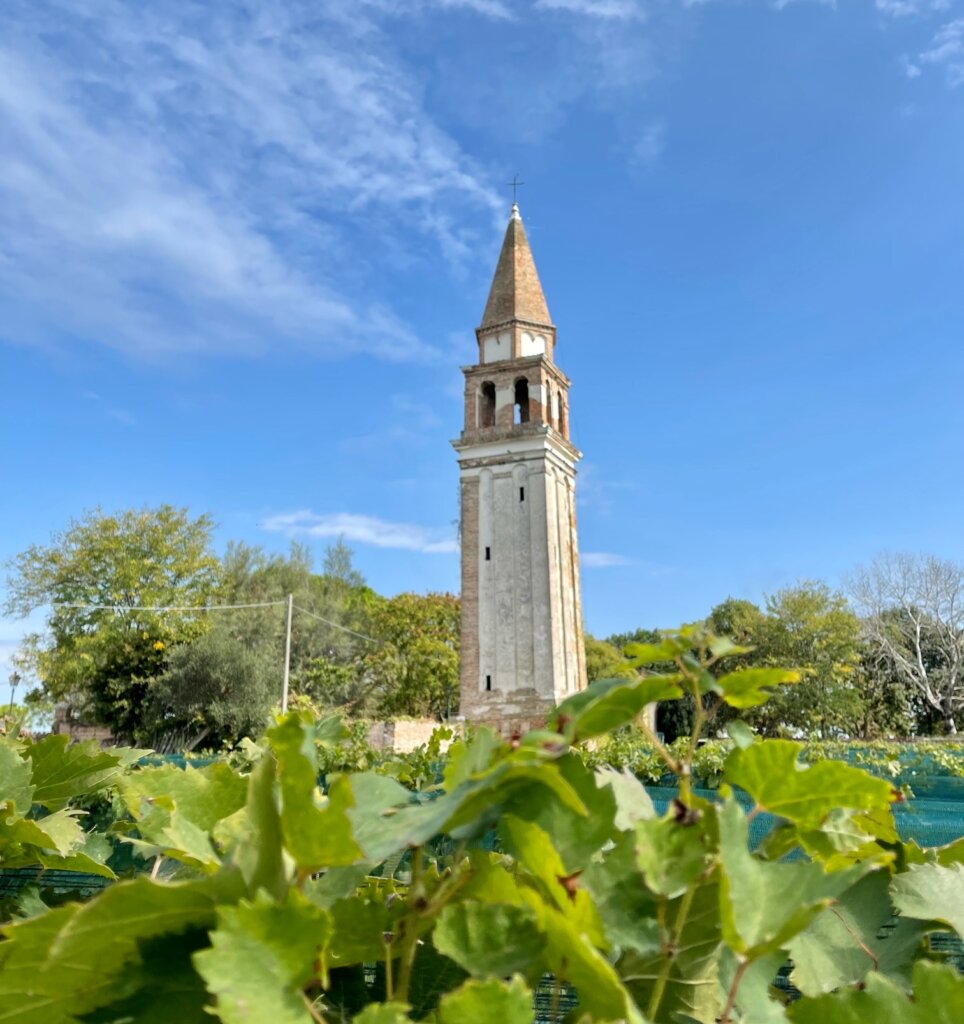
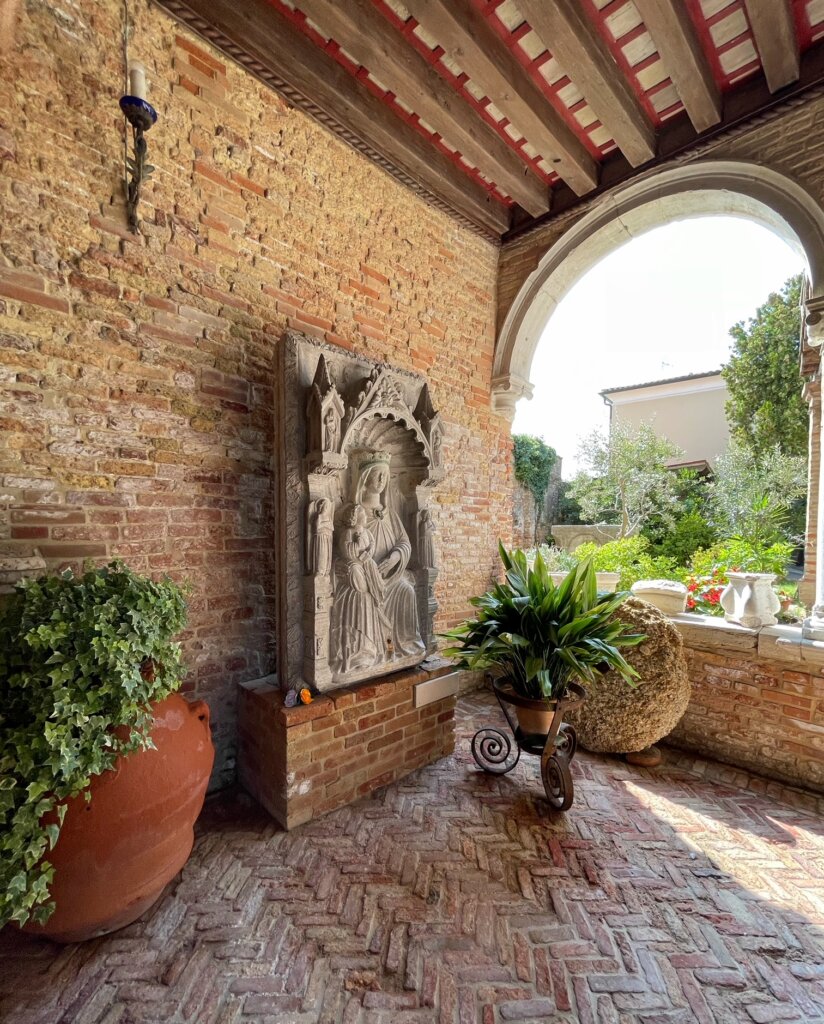
Over the course of about nine hours, we saw the colorful houses of Burano, ate delicious risotto in Mazzorbo, went to a glassmaking factory in Murano, and more. Every place that we went was incredible and this was easily one of the most memorable day tours I’ve ever done. The beauty of these Venetian islands is unparalleled.
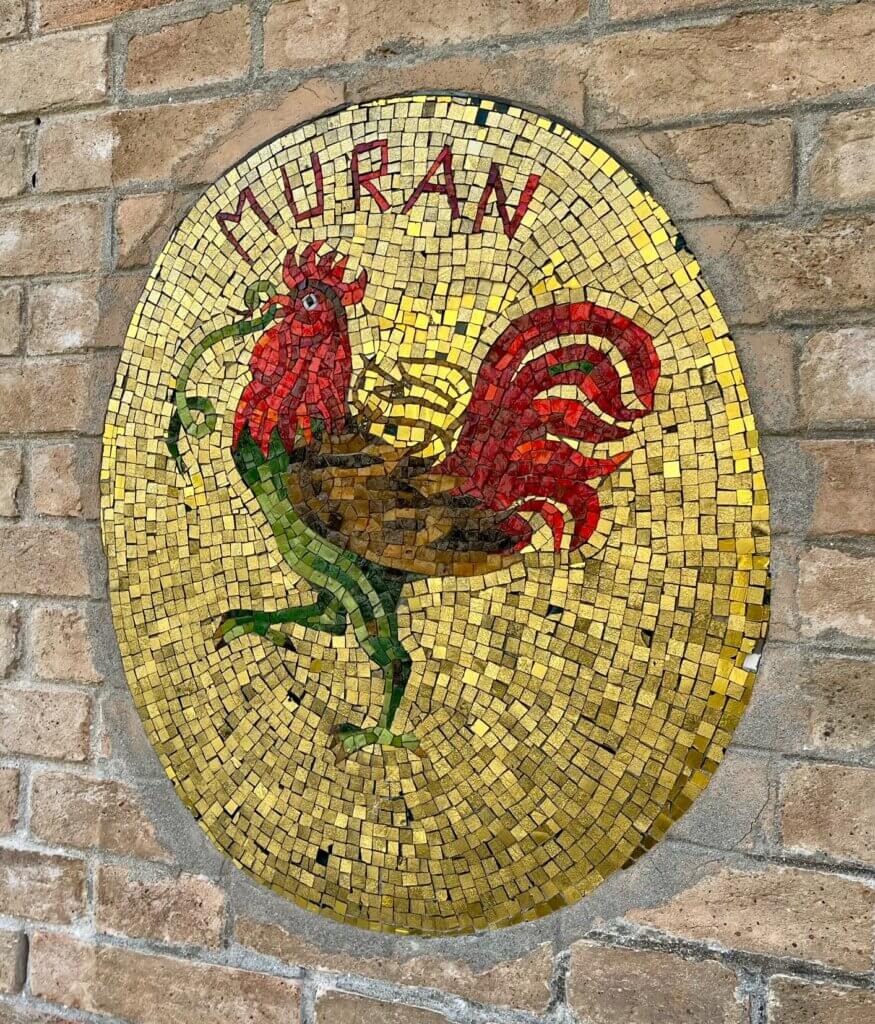
Murano 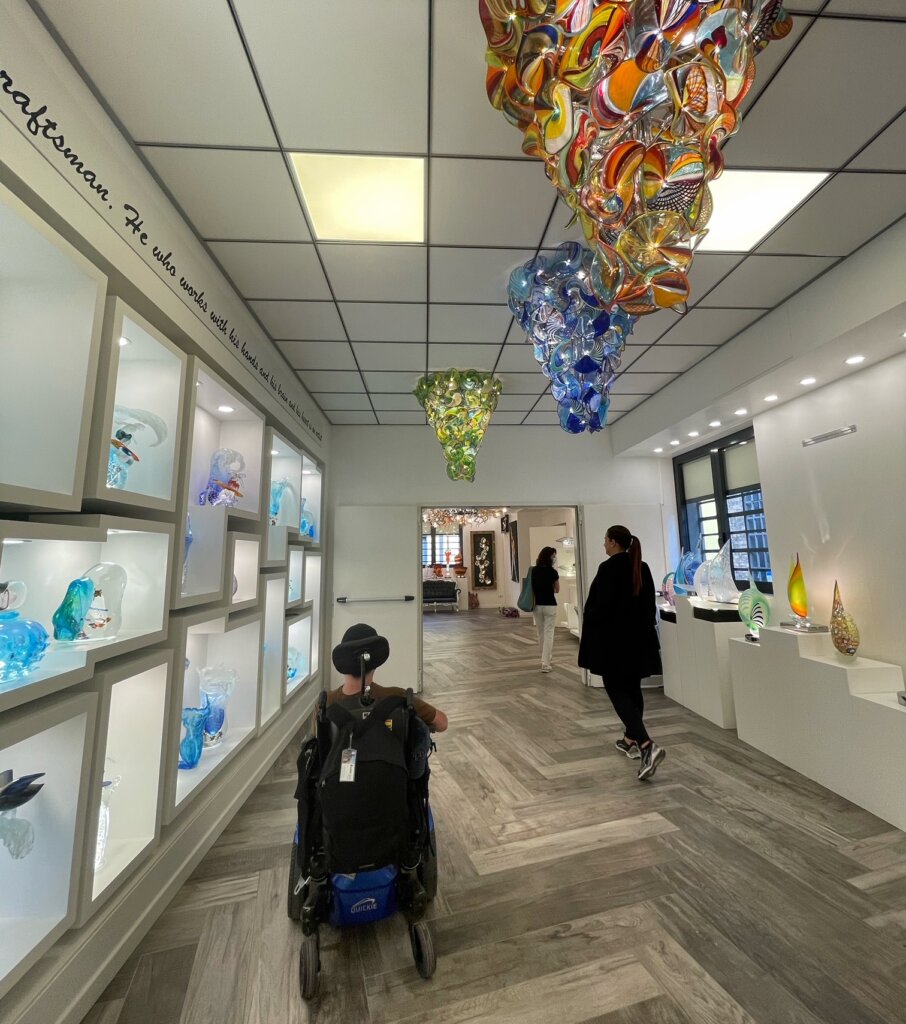
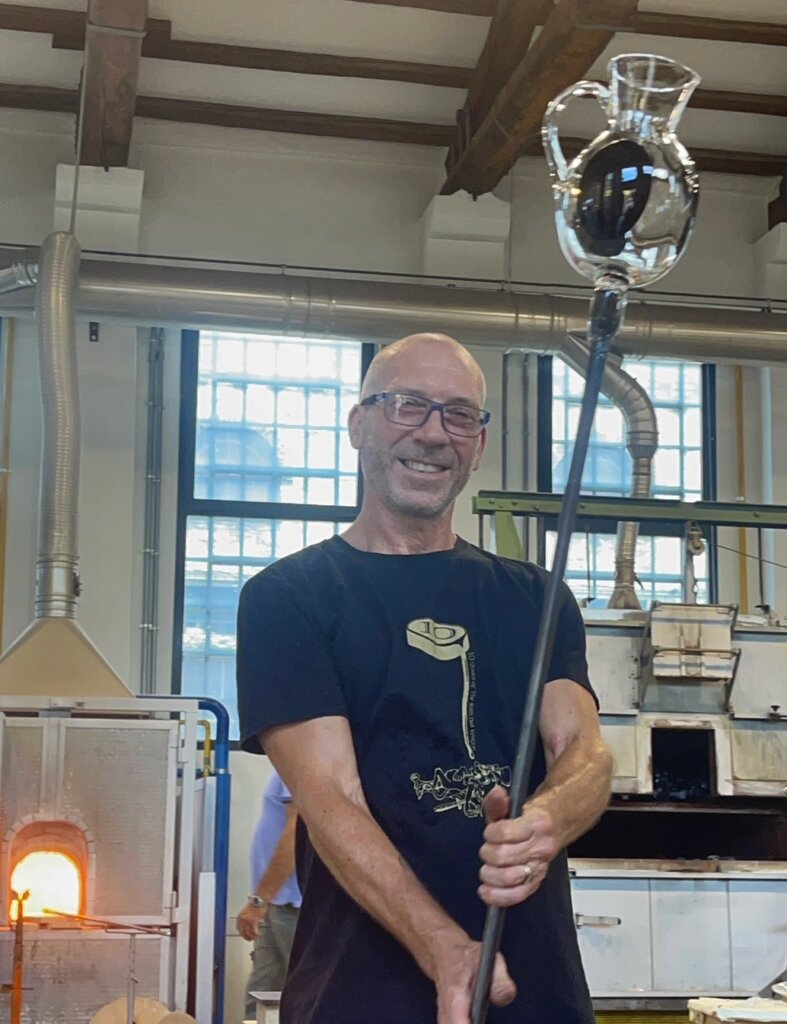
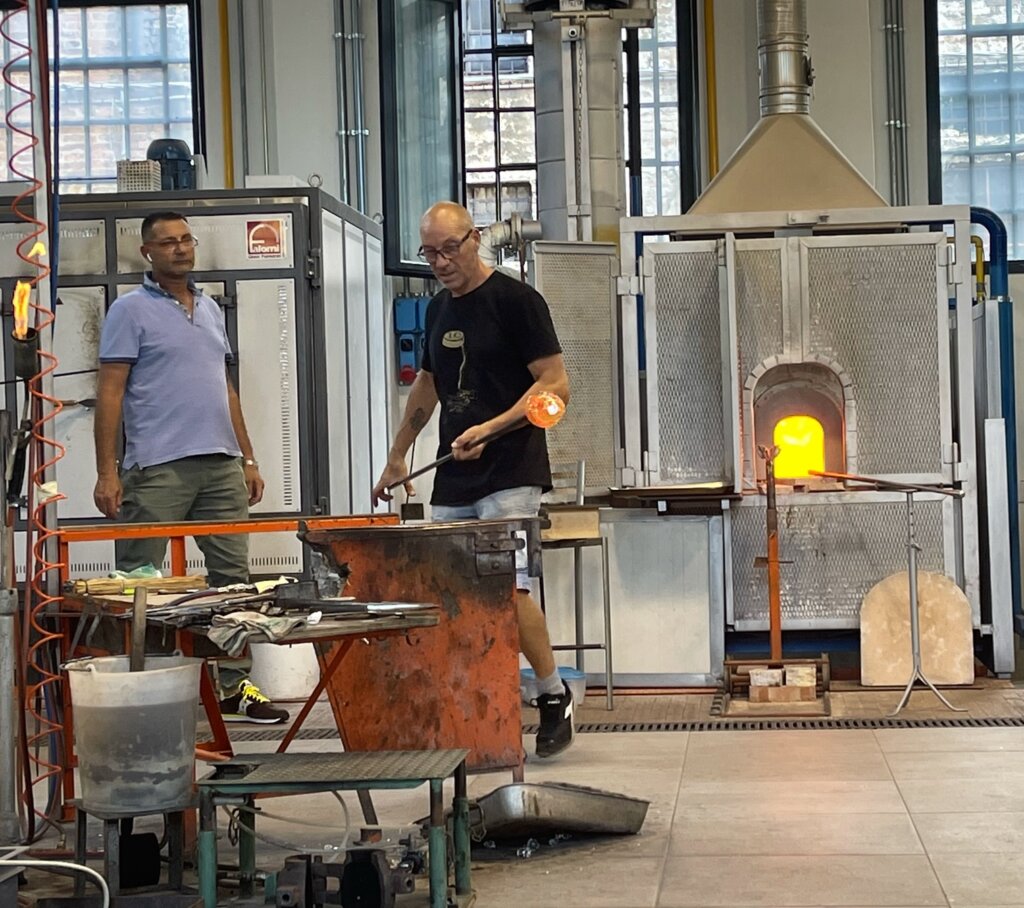
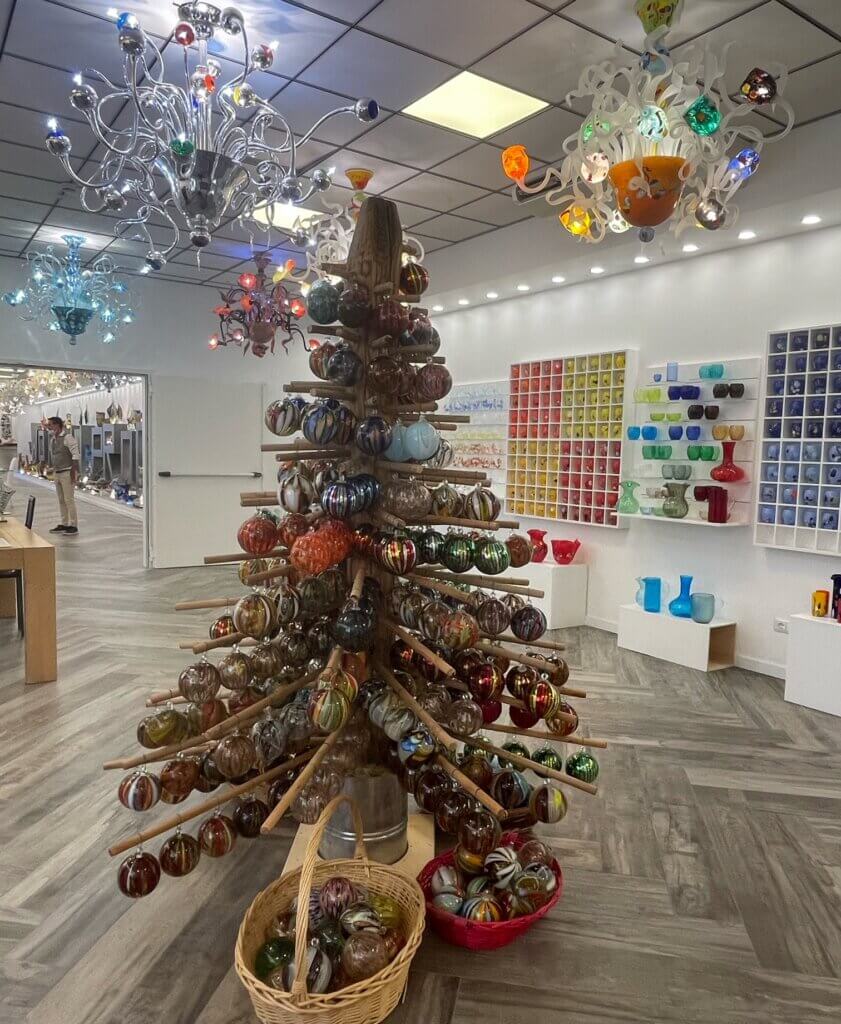
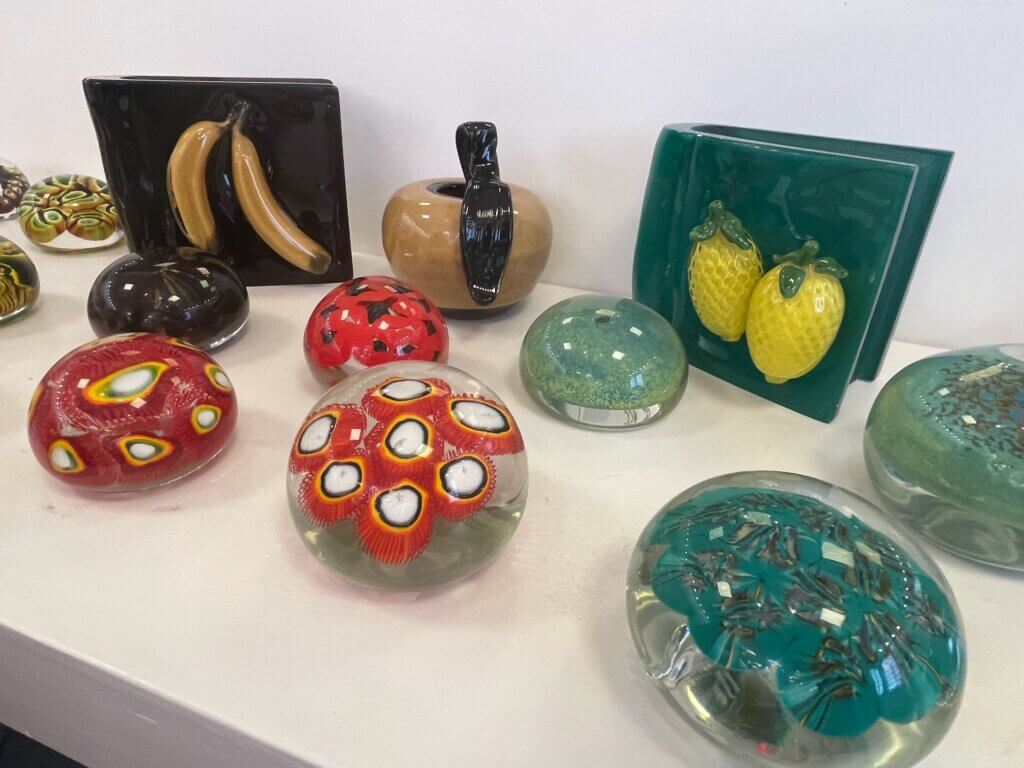
For our day tour to Burano, Mazzorbo, and Murano, Disabled Accessible Travel organized and led our tour, and they did a phenomenal job. We did this tour on our last full day in Venice and it was the perfect way to end our trip!
Where to Stay in Venice: Dona Palace Hotel
While in Venice, we stayed at the Dona Palace Hotel. We chose this hotel because it’s in a fantastic location (just a 5 minute walk from St. Mark’s Square) and it offers wheelchair accessible rooms.
I stayed in a wheelchair accessible junior suite room, which was really spacious. It had a large living area, a stocked mini fridge, and a TV. There was one queen-sized bed and it had plenty of clearance underneath the bed for a hoyer lift. The bed was also a great height for self-transferring.
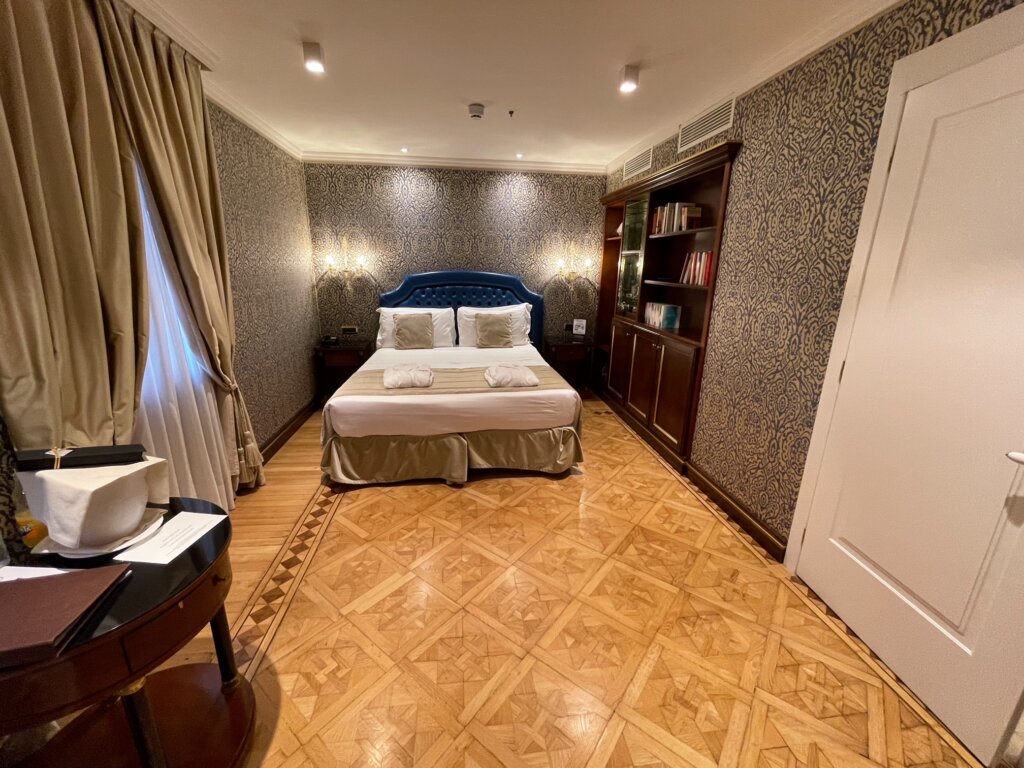
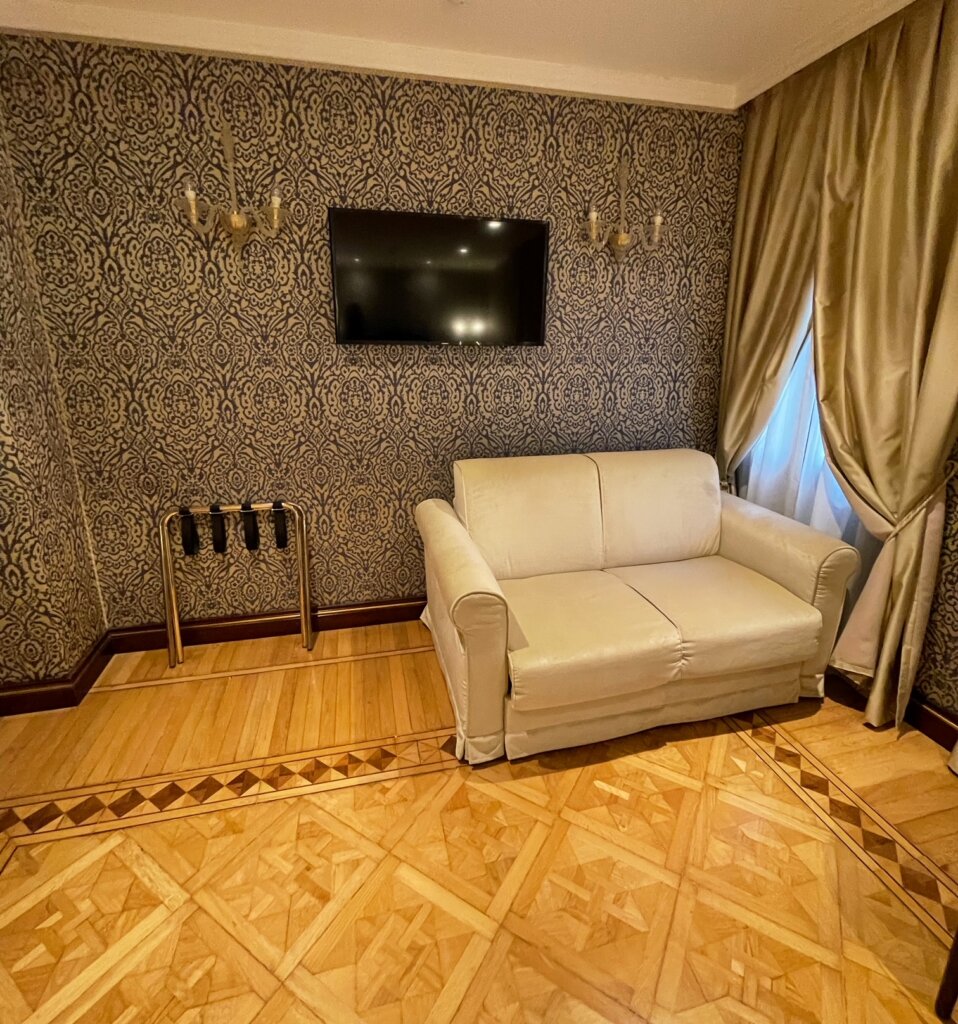
In the bathroom, there was a roll-in shower with smooth entry and a pull-under sink. There was also a tub in the bathroom, a bidet, and a toilet, but there were no grab bars by the toilet, unfortunately. The hotel did provide a shower seat, but it was rather small.


My favorite part of this hotel was the courtyard, where we could watch gondoliers go by and enjoy drinks from the bar. It was a nice area to relax and enjoy the great weather.

Dona Palace Hotel did offer breakfast and had a stair lift to get wheelchair users to the breakfast area. Unfortunately, my powered wheelchair was too heavy for the stair lift, so I chose to get breakfast elsewhere every day, but if you have a lighter wheelchair (mine weighs 400 lbs + me), you might could use it and get breakfast in the hotel.
Overall, I really enjoyed staying at Dona Palace and I would certainly stay there again if I’m ever back in Venice. The hotel was accessible enough for my needs and you really couldn’t get a better location. To book your own stay at Dona Palace, learn more here.
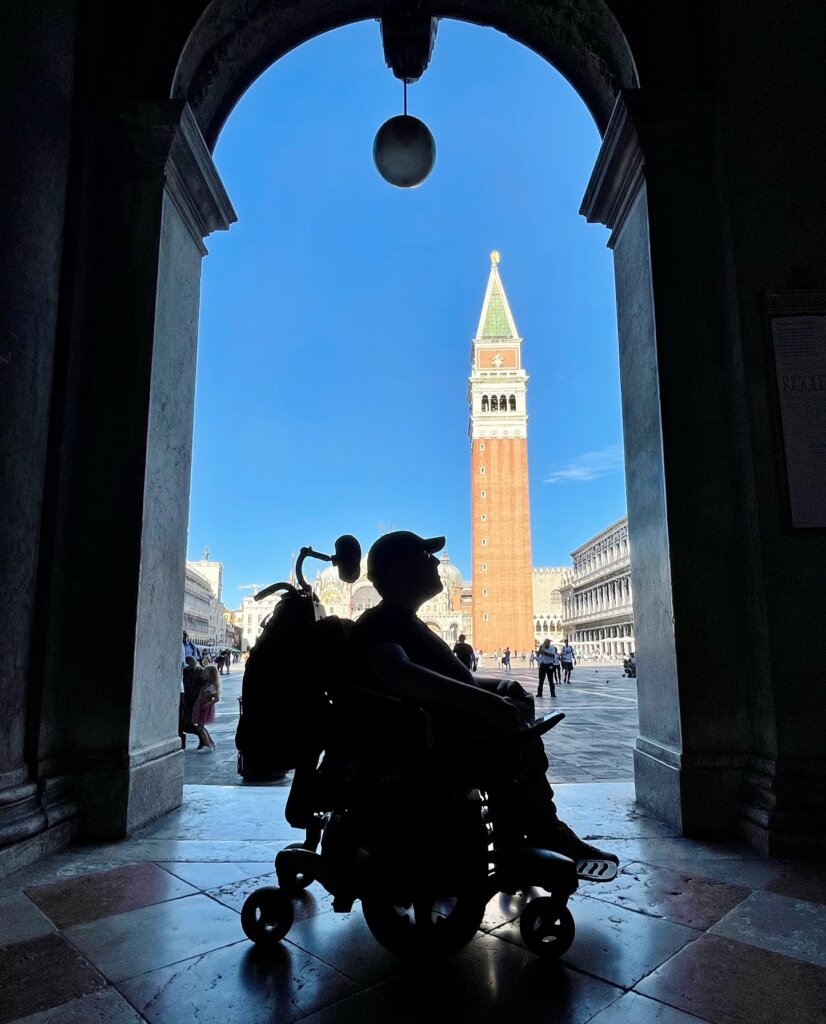
During our three days in the city, we enjoyed so much of what Venice has to offer, but I know that there is a lot more of wheelchair accessible Venice Italy to see. Throughout my time in the city, I kept having to pinch myself because I couldn’t believe that I was actually there and that it was wheelchair accessible… well, wheelchair accessible enough that I was able to have a fun trip! I already cannot wait to return and see even more of Venice one day!
.
.

